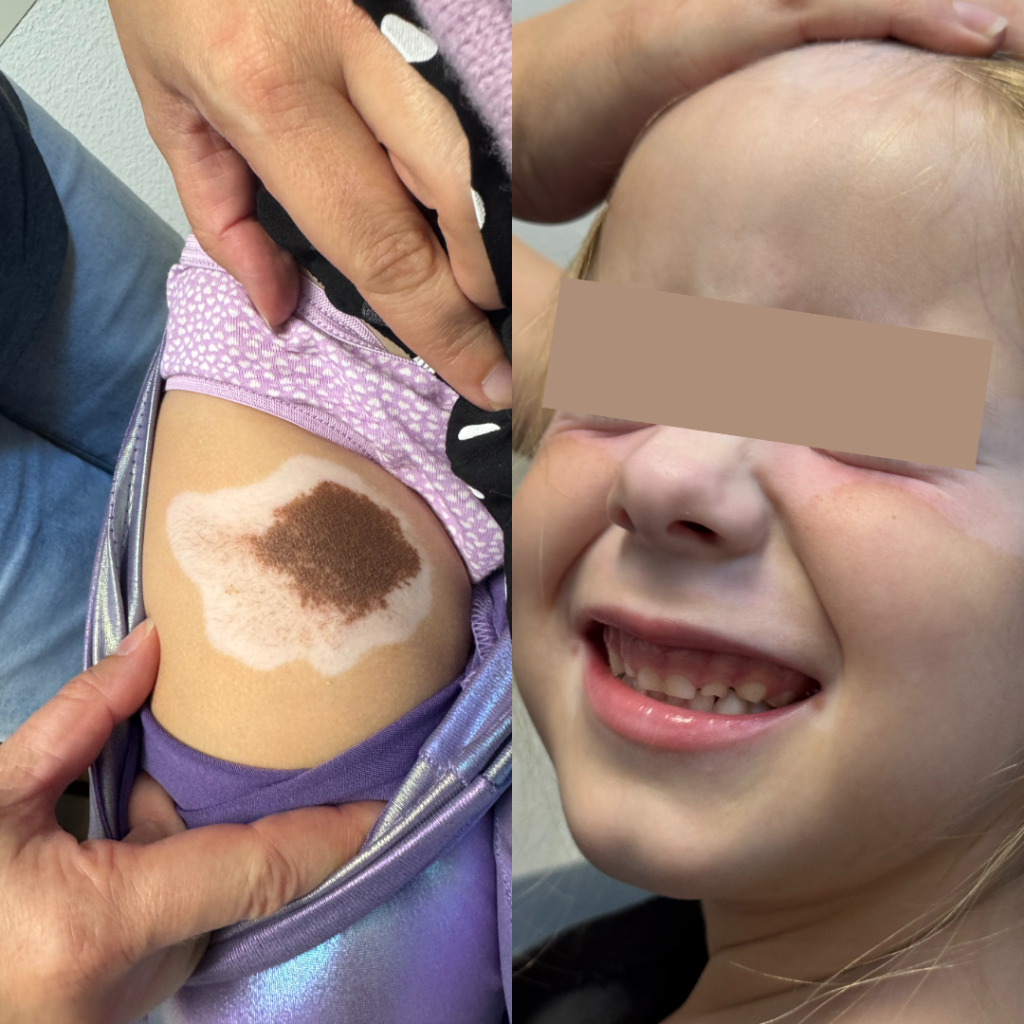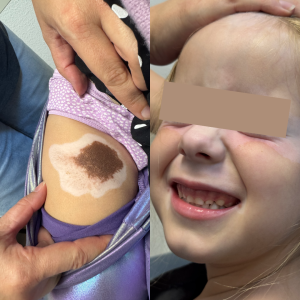

A 4-year-old girl came to our clinic with a mole she was born with (a congenital melanocytic nevus). Over time, her parents noticed a light ring of skin around the mole. Soon after, new white patches began to show up on her face, chest, and arms—far away from the original mole.
This is a condition called vitiligo associated with a congenital mole. The body’s immune system, which normally protects us, can sometimes become overactive and start attacking the pigment cells that give our skin color. This can cause:
Doctors group these birthmark moles by their size as a child grows:
Treatment depends on the child, the size of the mole, and how widespread the white patches are. Options include:
Is the halo around the mole dangerous?
In most children, it’s a harmless immune reaction. Still, regular check-ups are important.
Will the white patches go away?
Sometimes they stabilize, and with treatment, some may regain pigment.
Does removing the mole cure vitiligo?
Not always. In some cases it helps, but vitiligo can still appear elsewhere because the immune system and its attacks on pigment producing cells called melanocytes have been activated.
What’s the cancer risk?
It depends on mole size. Small and medium moles have very low risk. Large or giant moles carry a higher, but still uncommon, risk and require close monitoring.
How can we help our child cope?
Sun protection, camouflage makeup, and emotional support make a big difference. Most importantly, reassurance that their skin condition doesn’t define who they are.